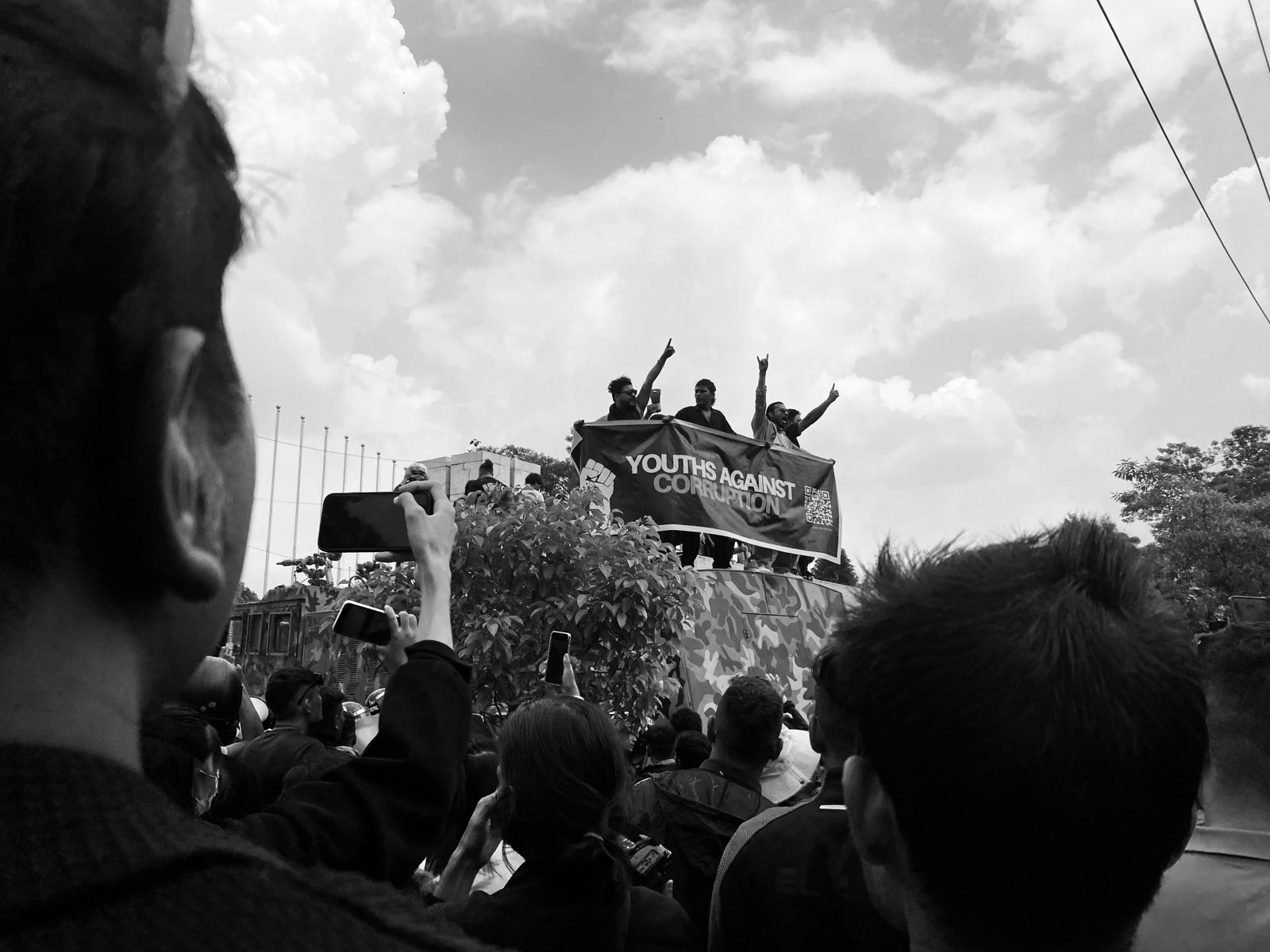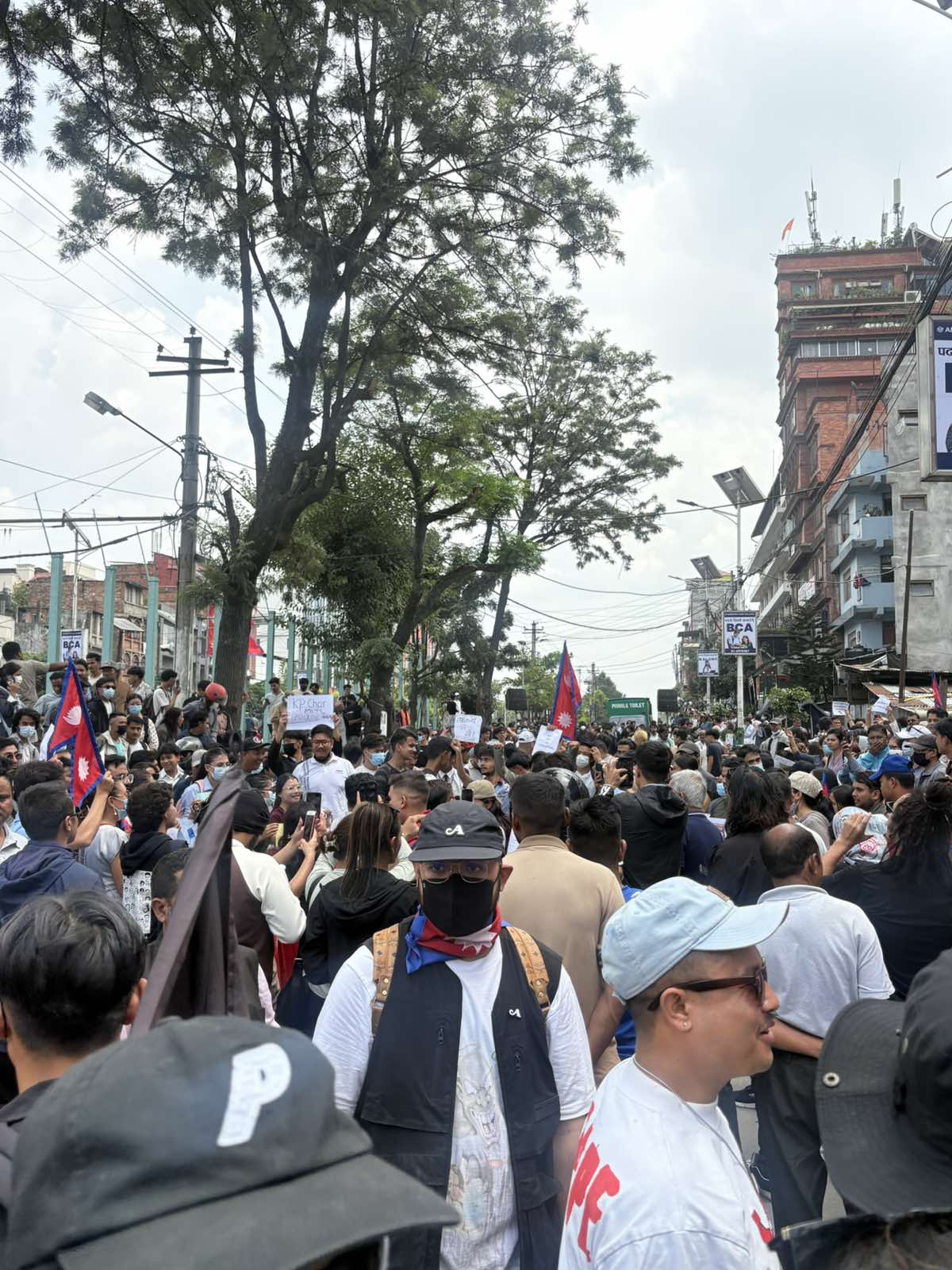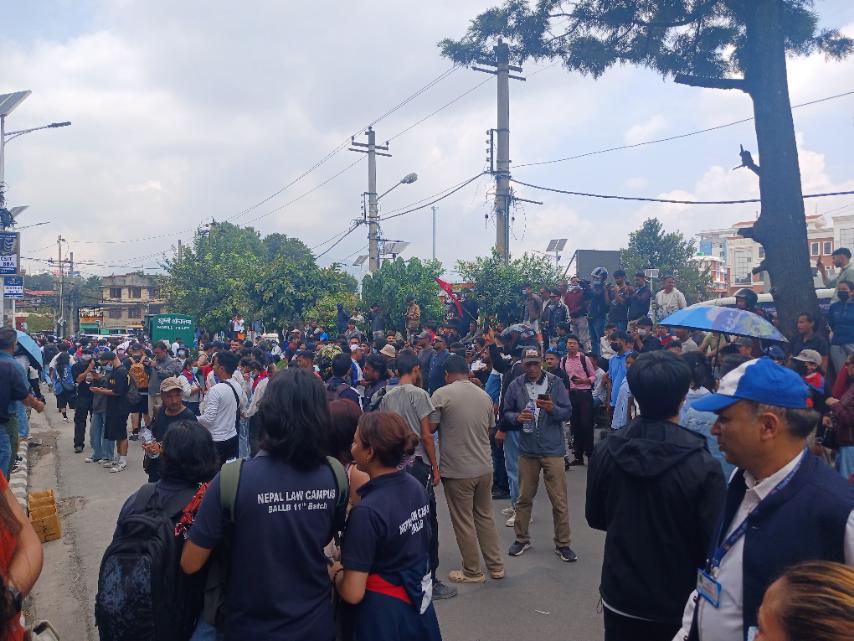Nepal’s 8 September massacre
The government has stirred a hornet's nest of anger among youth with Monday's killingsA rally organised by young Nepalis across the country against corruption, impunity and restrictions on freedom of expression on Monday turned into one of the deadliest days in the country's recent history.
As of Monday evening, the death toll from the protest had reached 19, with 17 killed in Kathmandu and two in Itahari. More than 350 people were injured. Police have arrested more than 40 protesters.
Home Minister Ramesh Lekhak of the Nepali Congress resigned, and there have been calls from opposition parties for the entire NC-UML coalition to step down and announce early elections.
The protest followed a growing online movement led by young Nepalis exposing the ostentatious display of privilege by the offspring and relatives of politicians and other public figures, which had sparked discourse about nepotism, corruption and the wealth gap in Nepal.
Confronted with joblessness and corruption, Nepali youth looked to the recent street movement in Bangladesh, where a student uprising against quota-based recruitment for government jobs expanded last year and toppled the autocratic Sheikh Hasina government.
In Indonesia, public frustration with government apathy boiled over into a national movement last month after it emerged that elected officials and the political elite enjoyed perks while citizens faced a cost of living crisis.
In the Philippines, as disaster mitigation-infrastructure projects failed to work, citizens began to question where the funds for such projects were actually going. This prompted social media users to look deeper into the lives of the politically-connected figures who flaunted their lavish lifestyles online.
In Nepal public outrage has been building up against nepotism, corruption and impunity in government. Facing unemployment at home, nearly 10% of Nepalis, mostly youth, toil overseas or leave Nepal in search for better lives abroad. Meanwhile, the well-connected posted images online of themselves enjoying holidays abroad paid with the ill-gotten wealth of relatives in high places.
Young GenZ Nepalis, frustrated with establishment politicians, had called for an anti-corruption, anti-government movement across the country. This coincided with the Nepal government’s decision on 5 September to ban 26 social media sites for failing to register and pay taxes in Nepal.

Faced with the government's social media blockade, the protests took to the street. The movement was supposed to be apolitical, and focused against corruption. It garnered support from public figures and opposition leaders, some of whom conveniently forgot that they had been in government when the TikTok ban was imposed in Nepal in 2023.
On Monday morning, protesters showed up at Maitighar with slogans and placards, many of them college students, even school children. The organisers had called for young Nepalis to join in their uniforms, believing that it would protect them from violence that might occur during the course of the day.
By mid-morning, thousands of Nepalis had gathered at the Mandala intersection, playing music and chanting slogans. The mood was almost festive. Shortly after noon, however, a rally that had begun peacefully descended into violence after protesters broke the police barricade in Baneswor to storm Parliament.
Police first began firing tear gas and water cannons, and then live ammunition at demonstrators. The Kathmandu district administration is said to have authorised full use of force against protestors who vandalised public property after protestors infiltrated the Parliament grounds.

Organisers Hami Nepali had requested demonstrators to go home as the protests turned deadly, saying that those who stormed Parliament were not associated with them, hinting that the rally had been infiltrated by radical groups. But by that time, the demonstration had got too large to contain.
In the ensuing violence, hundreds were left injured, including journalists, and 17 dead so far in Kathmandu. Nepal’s leadership and security forces do not seem to have learnt their lessons about managing mass protests after the pro-monarchy demonstrations in March in which two people were killed.
The indiscriminate use of force against unarmed Nepalis turned into a massacre. The emergency wards in Kathmandu are filled with those with bullet wounds on their legs, arms and heads. Hospitals have called for blood donations.
At the time of publishing, there has been no statement from the Prime Minister, who before the protest on Monday had belittled GenZ youth as being naive, wet behind the ears, and their movement being ‘led by provocateurs’.
Oli has presided over a slew of Bills to constrain the press, social media, and civil society, he has silenced and mowed down competitors and critics within his own party. This week, the UML got rid of age and term limits for party chairmanship, effectively clearing the way for 74-year-old Oli to head the party for the foreseeable future.
Also feeding into the anger in the GenZ protest was a CCTV clip of a young woman being hit on Saturday at a zebra crossing by the car of a provincial minister in Godavari. The video of the car speeding away without stopping went viral on TikTok, one of few social media platforms still functioning.

Oli fuelled the outrage by dismissing the victim’s injury as “minor”, and accusing political rivals of magnifying the issue.
Opposition leaders and members of civil society have called for the government to resign en masse, and the fourth-largest party in Parliament, the RSP, has called for a snap election.
As per his agreement with the NC, Oli is supposed to hand over power early next year to its leader ’s Sher Bahadur Deuba. Some analysts have suggested that if Oli did the handover now, he could help defuse the situation and earn brownie points ahead of the 2027 elections.
But such political calculation would belittle the tragedy that has befallen the families of the 19 who were killed on Monday. Nepal’s political leadership cannot think that just reshuffling its three-card prime ministerial deck will quell public anger now.
Nepal’s next generation wants to uproot the rot of corruption from politics, governance, and the bureaucracy. It wants elected leaders to deliver services, provide jobs and raise living standards.
Monday’s massacre has only made them angrier, and bolstered their resolve to lead from the front.
writer
Shristi Karki is a correspondent with Nepali Times. She joined Nepali Times as an intern in 2020, becoming a part of the newsroom full-time after graduating from Kathmandu University School of Arts. Karki has reported on politics, current affairs, art and culture.




